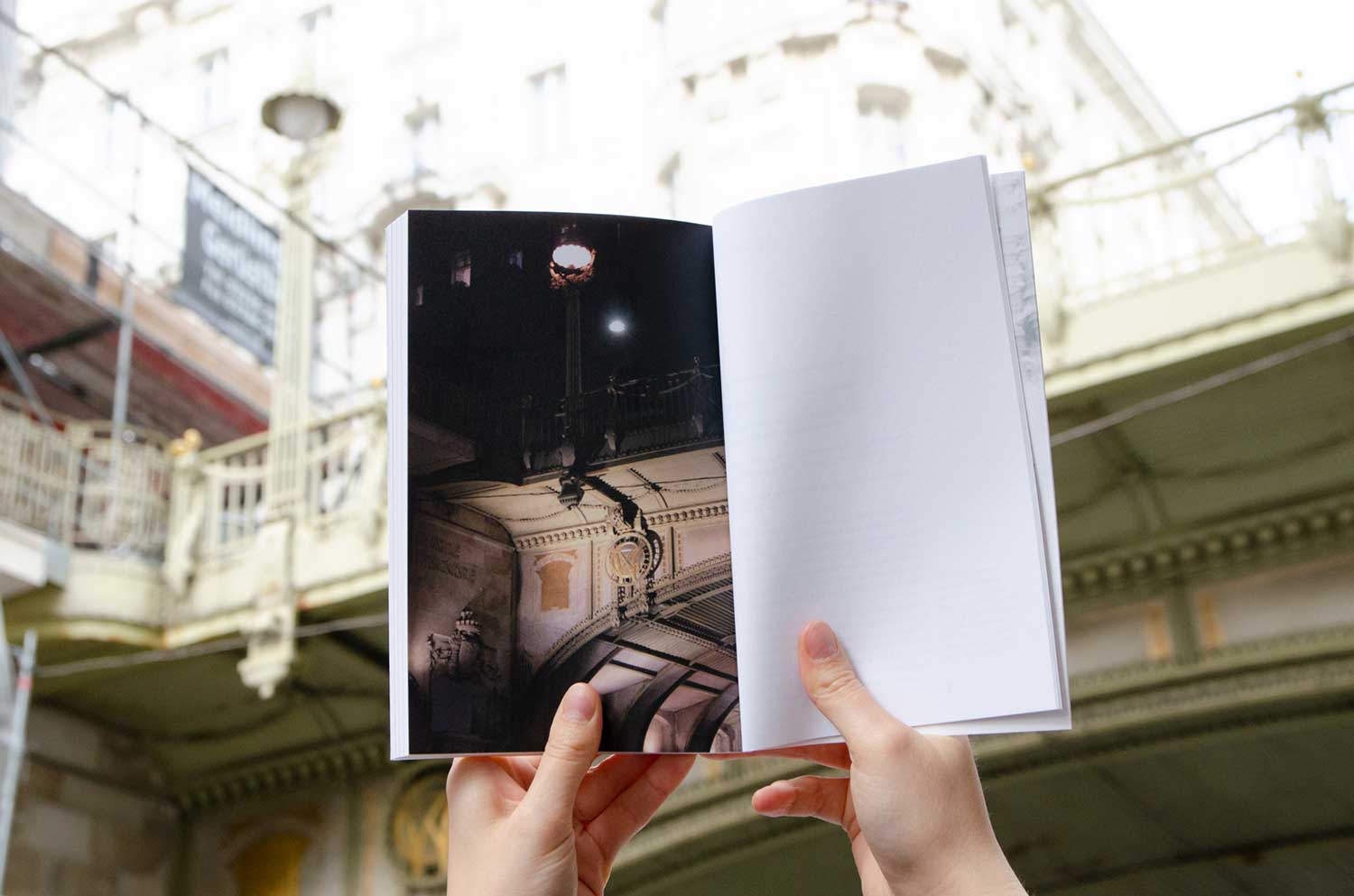
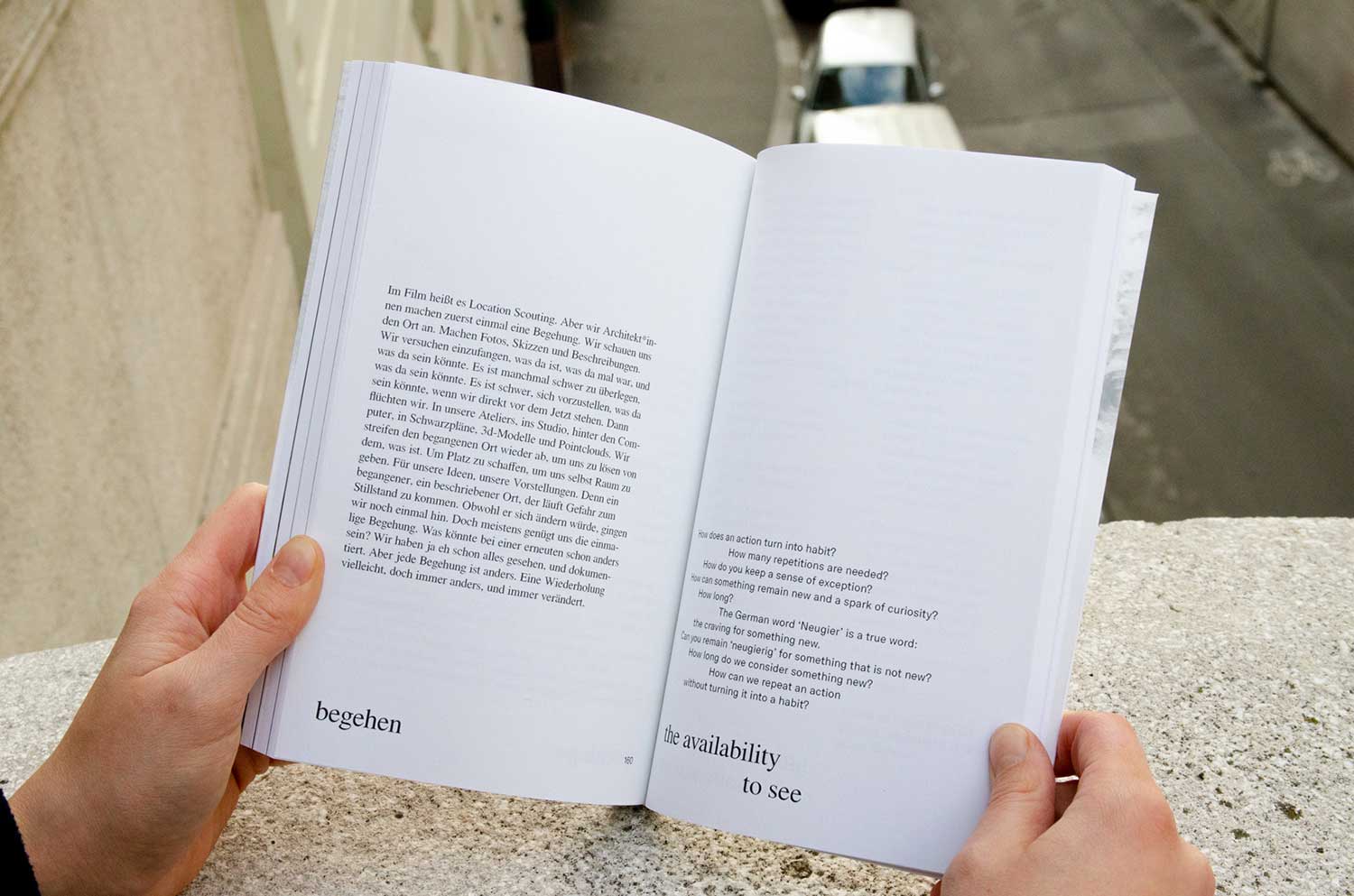
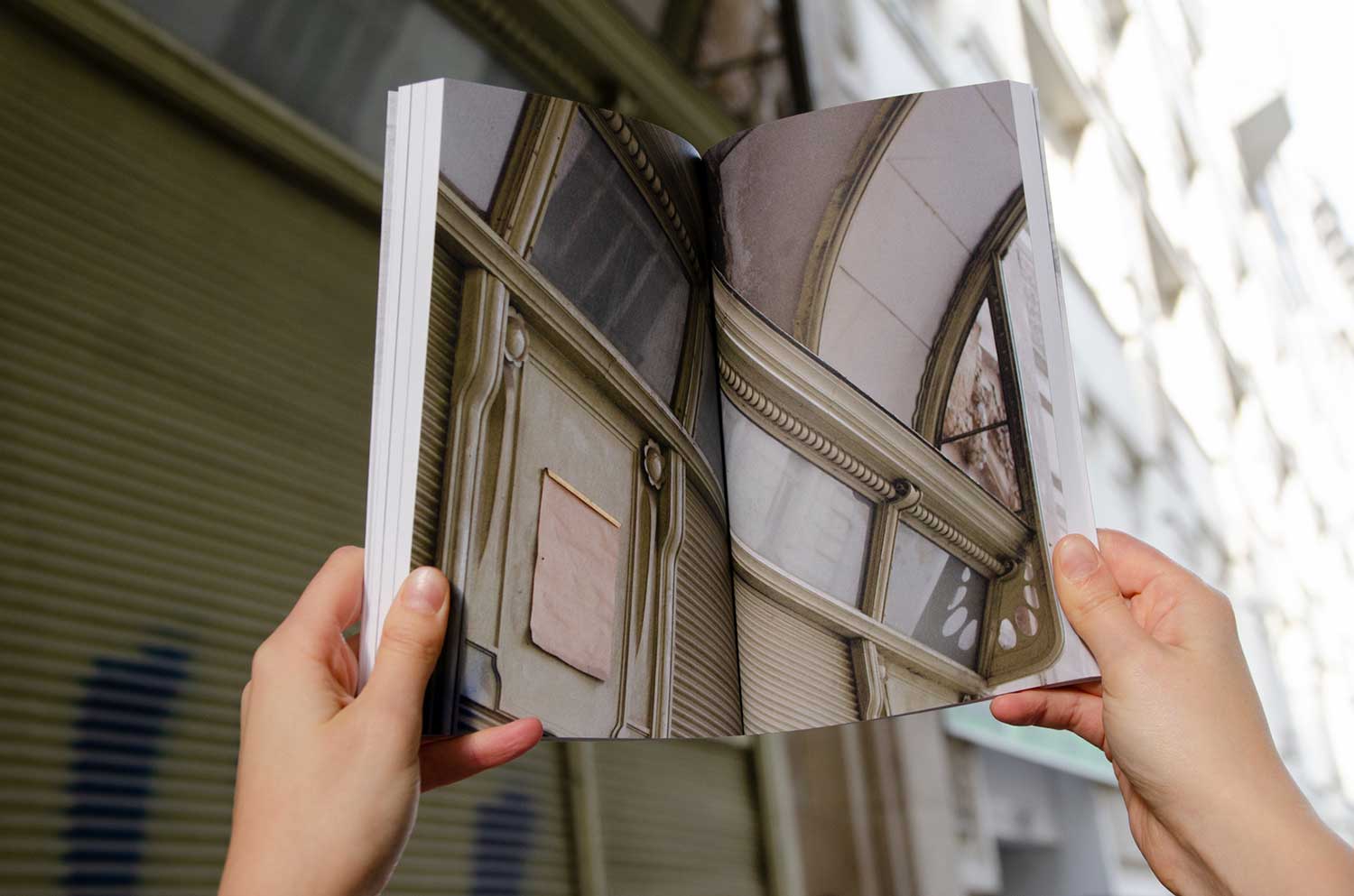
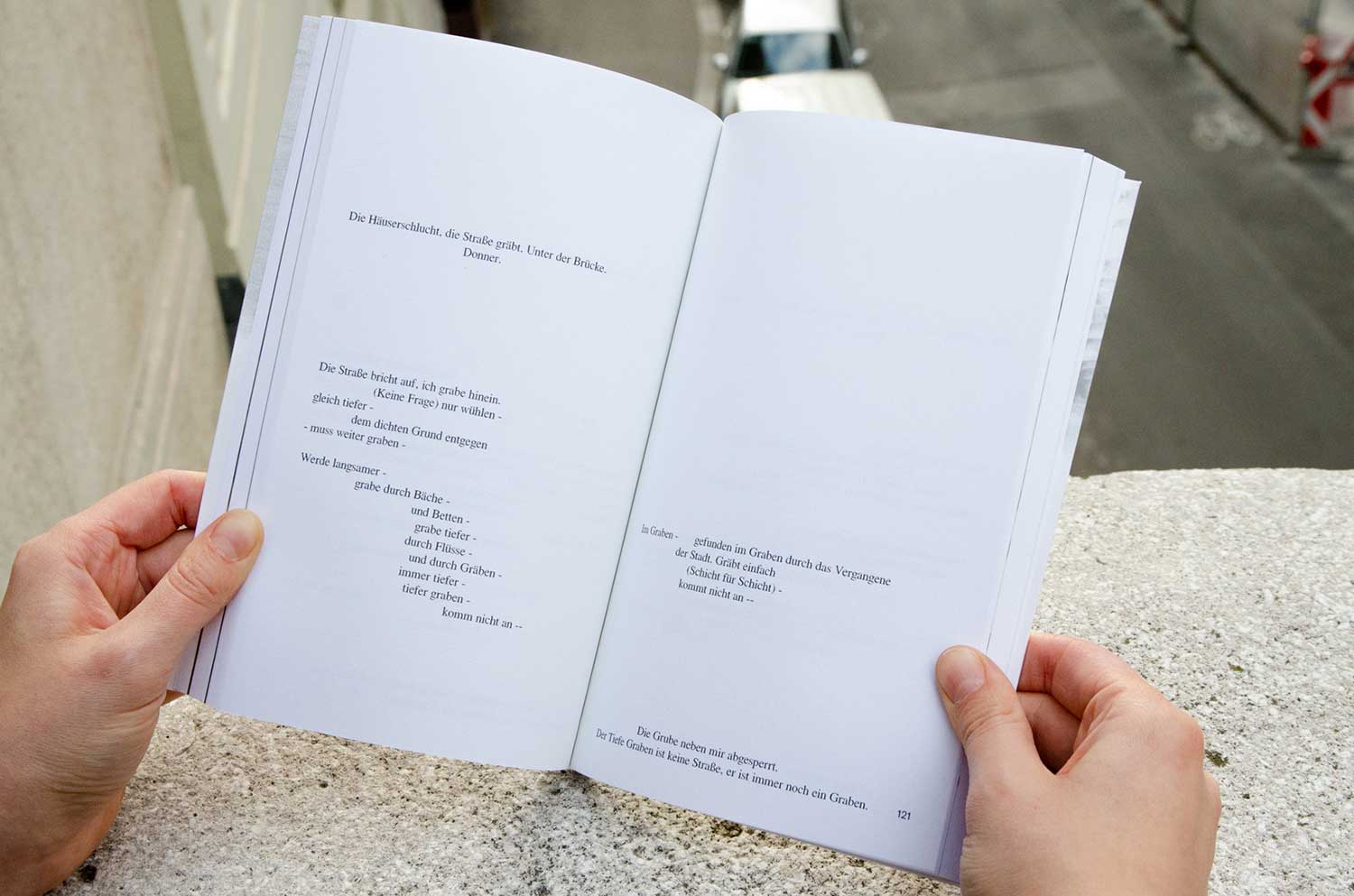
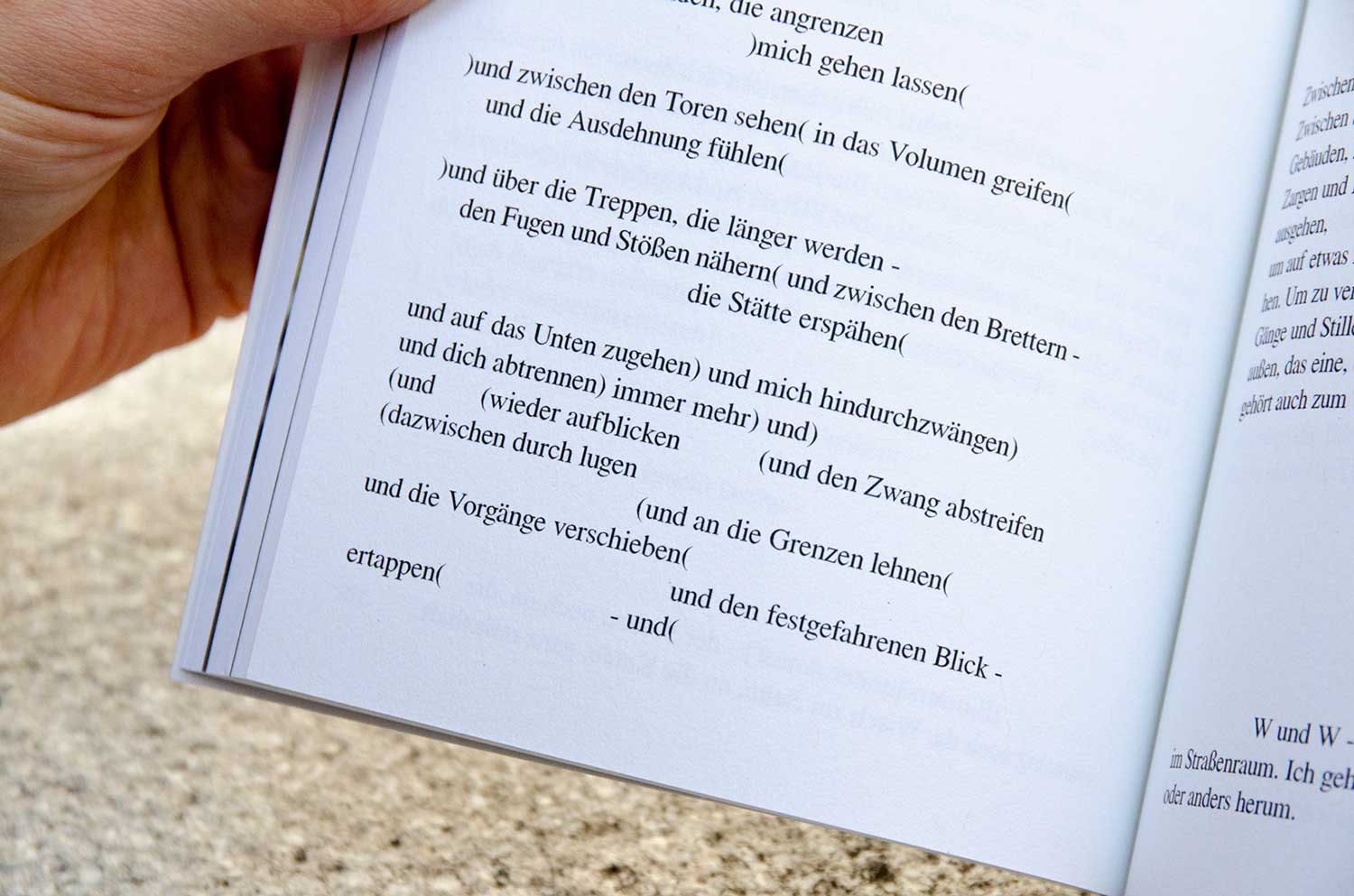
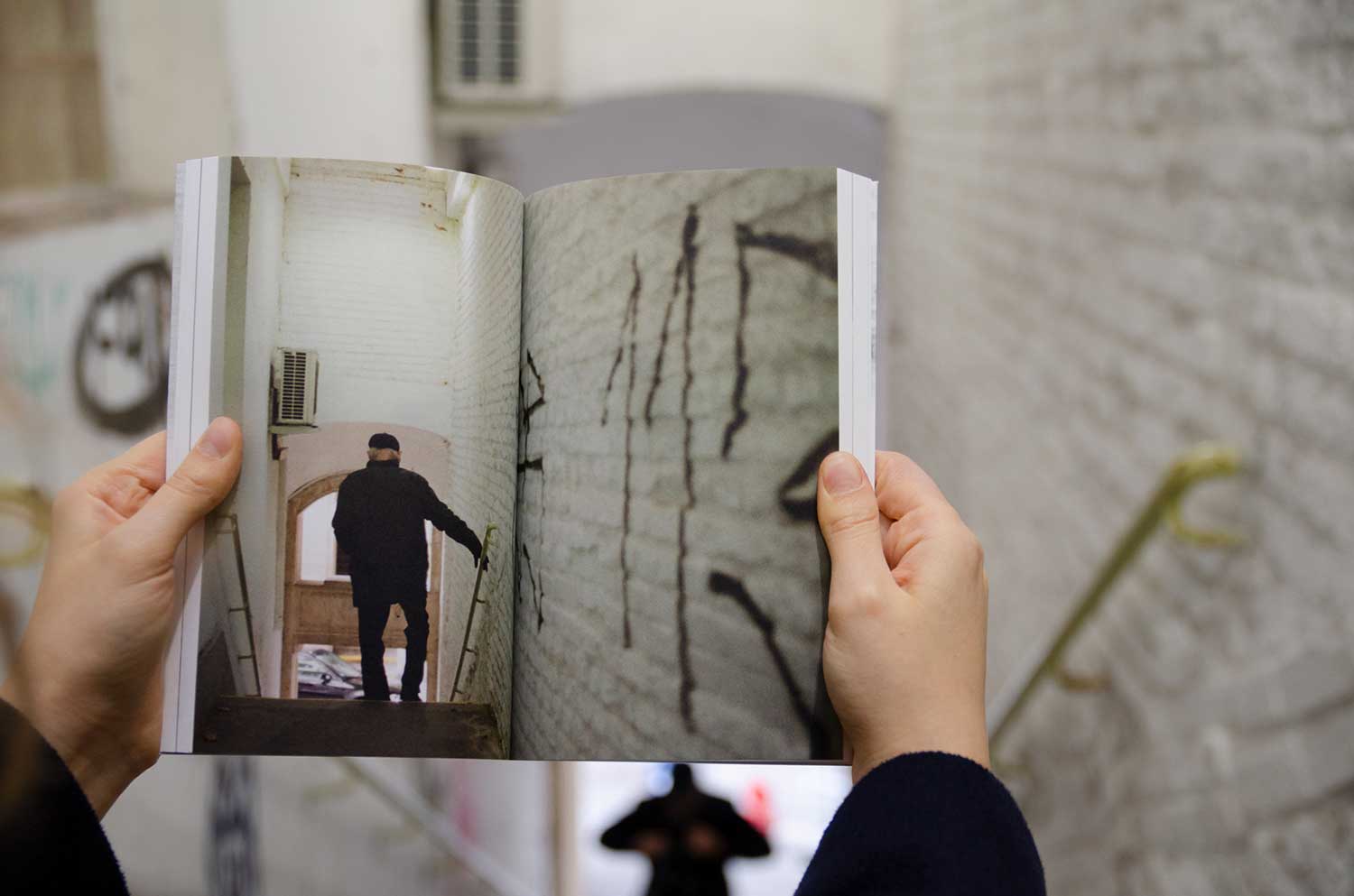
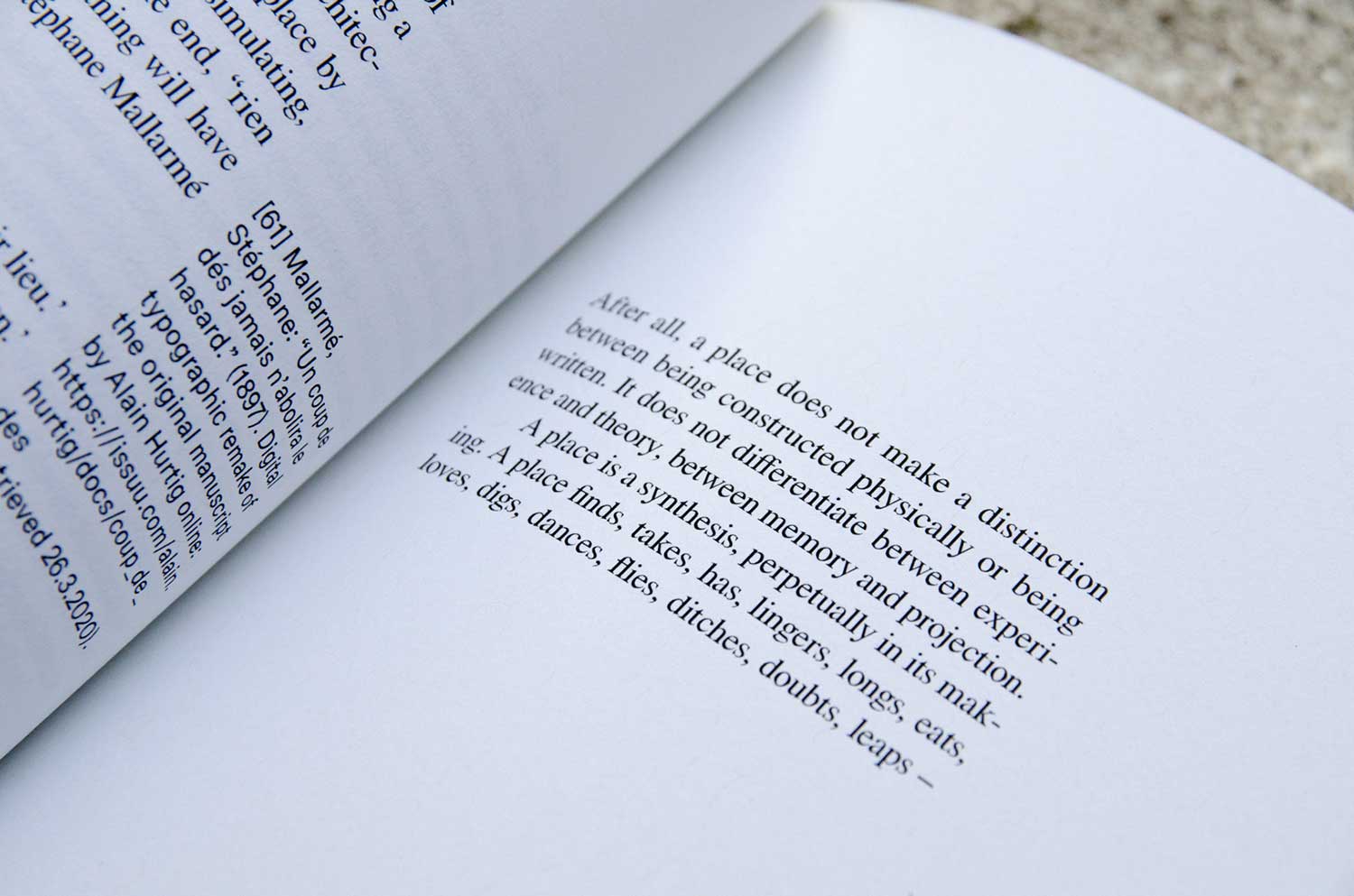
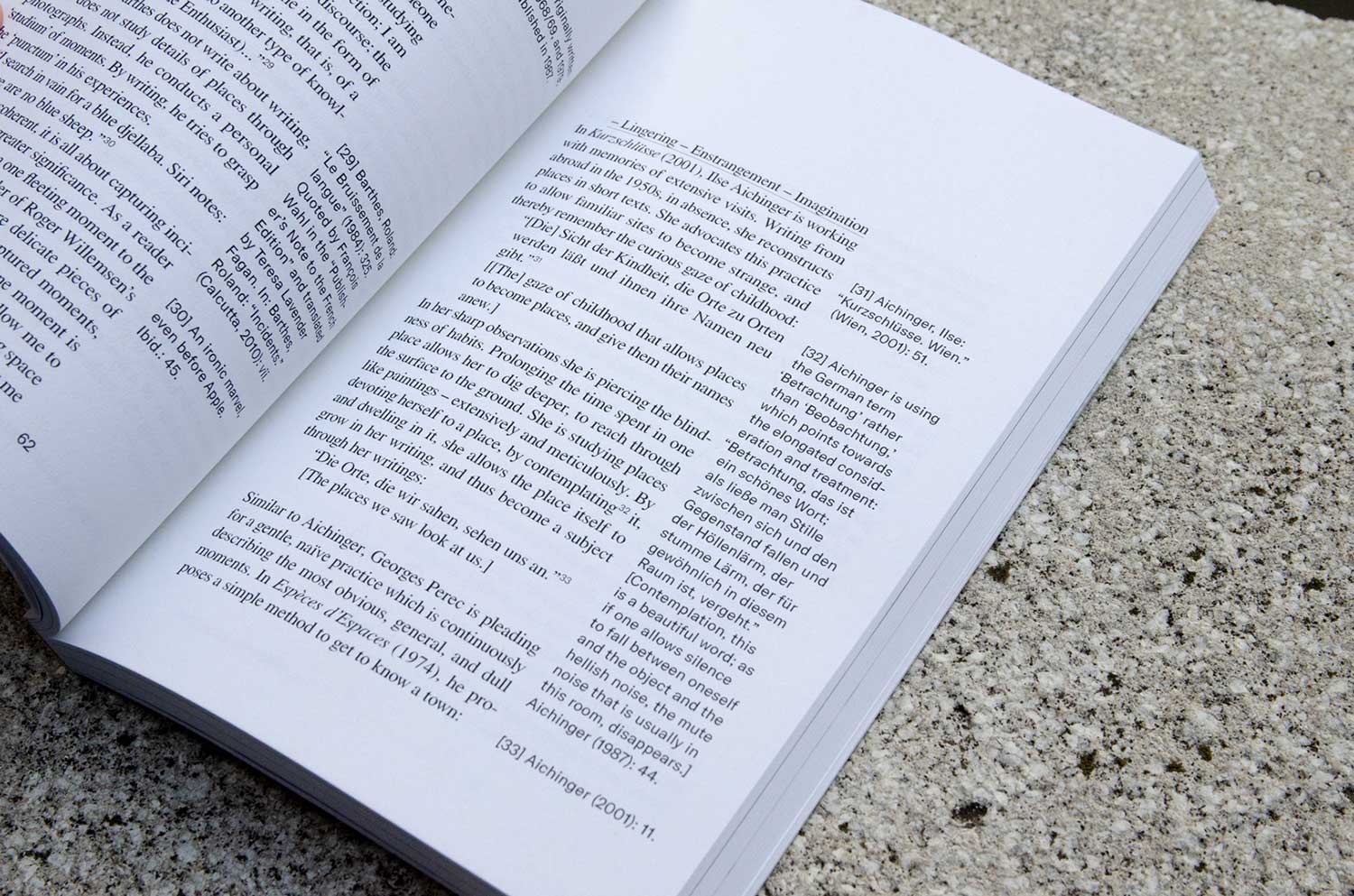
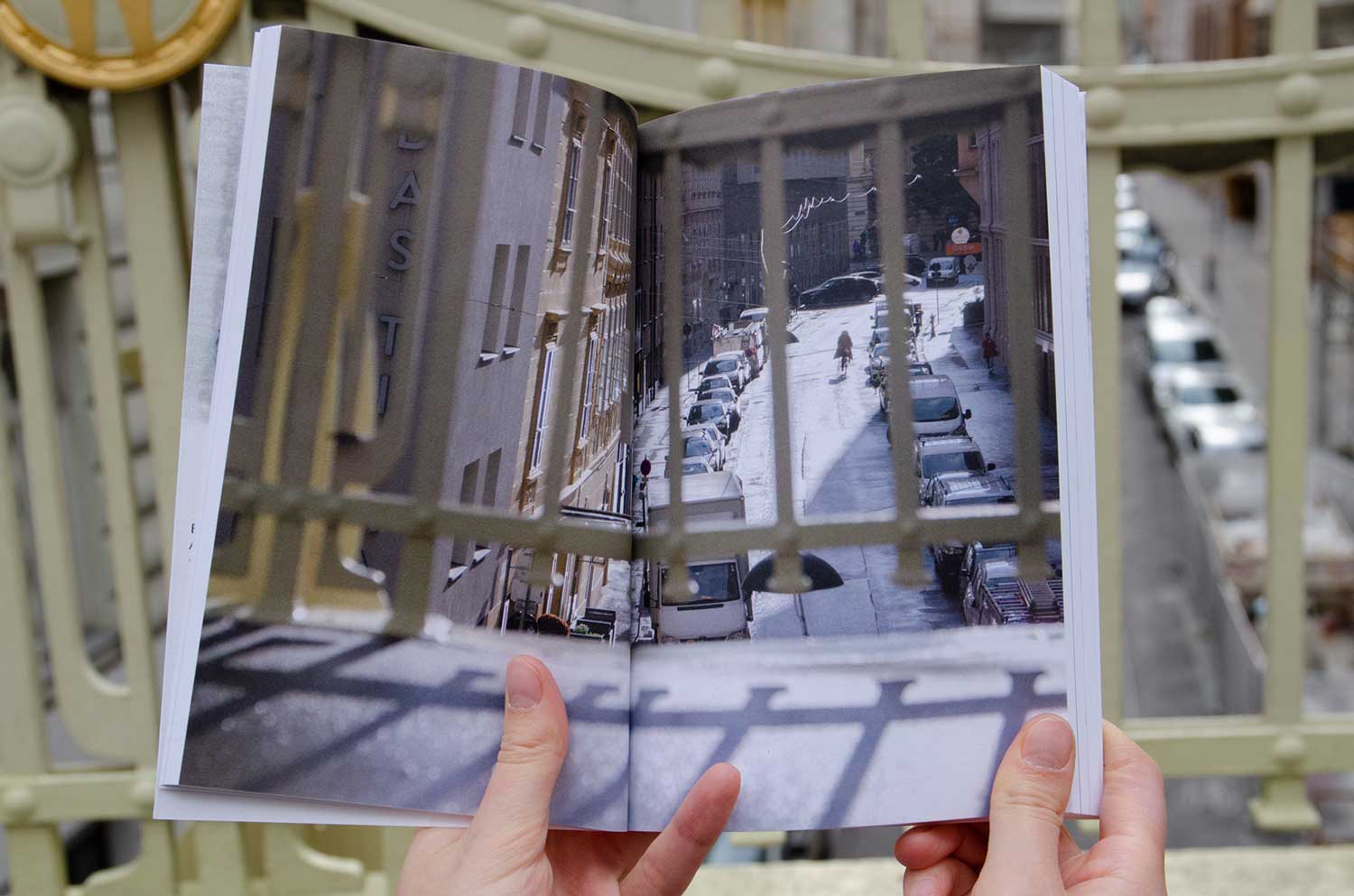
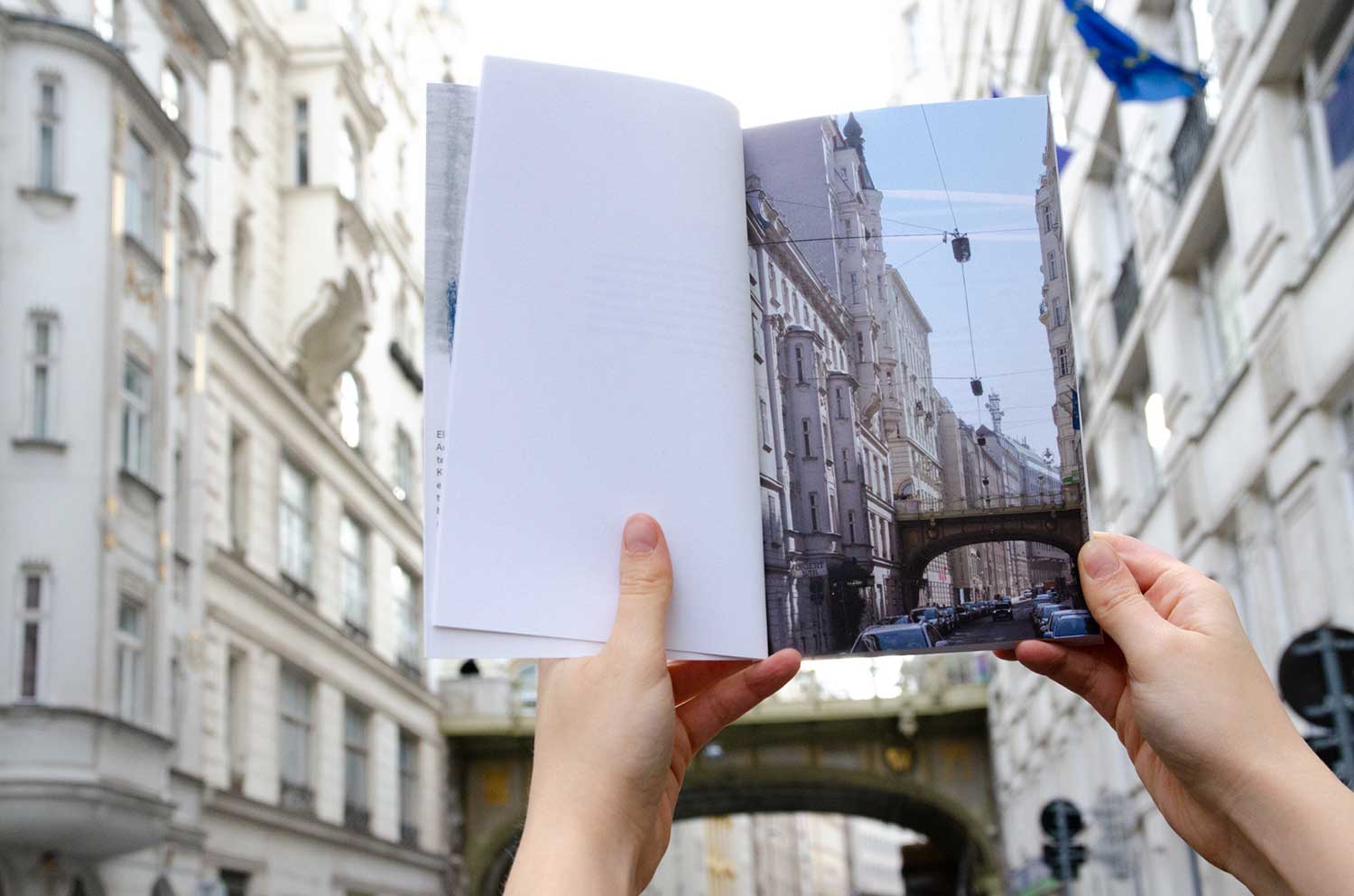
‘Reading is not looking at, it is connecting, filtering, and seeing through. In other words, it is experiencing what emerges in our interaction with the world of the text. When we acquaint ourselves with our environment, we participate in its making.’
There is a place shared by architecture and poetry. It emerges out of their overlay, and requires us to enter, to adapt, and to actively participate in its configuration. By perceiving, by using, by engaging and behaving, we create realities, and we change them. By interacting with our environment, be it the physical or the written, our experiences inscribe meaning, thereby we create a place.
Unter der Hohen Brücke is an experiment. It consists of multiple attempts to construct a place within architecture and poetry, which can be entered and interacted with like a physical environment. In a case study – a reading – of Tiefer Graben/Hohe Brücke (Vienna, Austria) various writings and photographic interludes assemble in this book. While digging in this place, the essay ‘Writing as Architecture,’ a sequence of encounters ‘Im Inneren der Stadt,’ and a sketchbook ‘Unter der Hohen Brücke’ arise: from a reflective investigation, through directed, progressive explorations, to raw and intimate approaches.
By writing for a place, the work is unsealing potentials and setting up possibilities to enter, interact and practise in the ambiguous space within architecture and poetry.
For more info, including a video and a short interview: https://point-nemo.lu/collections/language-fiction/products/unter-der-hohen-brucke-digging-in-a-ditch-writing-for-a-place
Ella Felber, born 1994, is a writing architect in Vienna. She studied architecture, spatial design, and performative arts in Vienna and Copenhagen. She explores culturally entangled spatial politics in the collective teil zeit raum, is co-founder of the magazine blank, and plans various transformations.
Her works are experiments to create polyphonic places that emerge from sensation, memory, movement, and interaction.
Unter der Hohen Brücke started as a Master’s Thesis at the Institute of Art and Architecture at the Academy of Fine Arts Vienna in 2020. An edited version is published by Point Nemo Publishing, Remerschen 2021. tinyurl.com/unter-der-hohen-bruecke
The site visit is a crucial moment of contact in an architectural project, yet one that is usually cut short. By repeating, iterating, and elongating a visit, we start to linger. With the slow spatial practice of lingering, we allow the place to grow in our perception, in our descriptions – we transform a moment of contact into a place in itself. This can change and unfold unexpected insights, absurdities, and strangeness, which will in turn change our perception, and thus our interaction, and thus the place itself.
A variety of writings constructs this site as a multi-perspectival narrative, a complex fabric, a polyrhythmic dance. For writing to be received and experienced – that is, to become architecture – it needs to be read. Every reading of this place elicits new encounters. Every reading iterates a construction.
The poetic writings of Ilse Aichinger (e.g. Kleist, Moos, Fasane), Clarice Lispector (e.g. The Chandelier), and Dung Kai-cheung (Atlas: The Archaeology of an Imaginary City), among others, elicited the urge to read more and write myself.
Peter Mendelsund’s beautifully illustrated book What We See When We Read enabled me to connect the reading process to architectural experiences, emphasising the emancipatory role of the reader/visitor.
Marianne van Kerkhoven’s lecture Looking without pencil in the hand (Online: http://sarma.be/docs/2858) opened up many parallels between the practices of writing, dramaturgy, and architecture; her twelve points became like a map to navigate the process.






































































